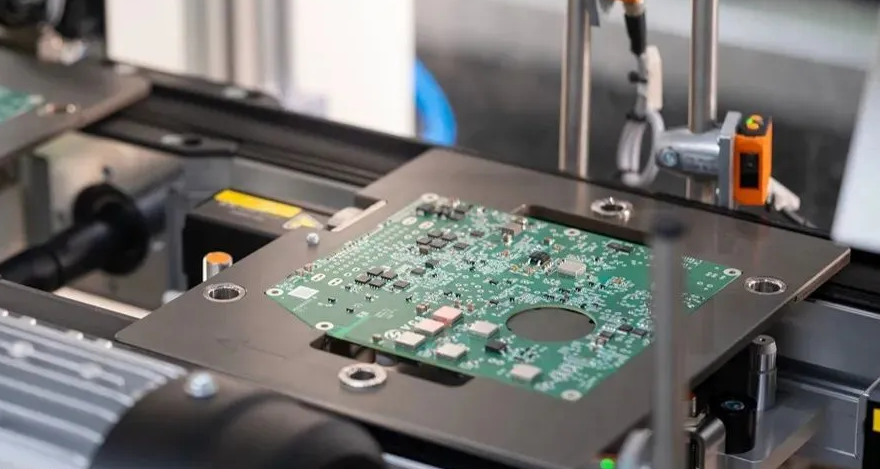AI Toy Chips Technology: Powering the Future of Smart Toys
Innovation Practices in AI Toy Chip Technology
 Overseas, chip manufacturers have been rolling out dedicated solutions for smart toys. For example, Nordic's nRF7002 chip supports both Wi-Fi 6 and Bluetooth protocols and integrates the Target Wake Time (TWT) function, featuring extremely low standby power consumption and a measured latency of less than 100 milliseconds. This chip not only supports AR/VR devices but is also suitable for high-end AI toys, providing robust technical support for real-time interaction in toys. Additionally, ST's dual-core STM32H747 MCU chip is used in Arduino's Portenta H7 as the main microcontroller and vision processing camera system for the smart toy car "RoboRacer." The high-performance processing capabilities of this chip enable the toy car to achieve complex vision recognition and motion control functions.
Overseas, chip manufacturers have been rolling out dedicated solutions for smart toys. For example, Nordic's nRF7002 chip supports both Wi-Fi 6 and Bluetooth protocols and integrates the Target Wake Time (TWT) function, featuring extremely low standby power consumption and a measured latency of less than 100 milliseconds. This chip not only supports AR/VR devices but is also suitable for high-end AI toys, providing robust technical support for real-time interaction in toys. Additionally, ST's dual-core STM32H747 MCU chip is used in Arduino's Portenta H7 as the main microcontroller and vision processing camera system for the smart toy car "RoboRacer." The high-performance processing capabilities of this chip enable the toy car to achieve complex vision recognition and motion control functions.
Domestic chip manufacturers have also made significant progress in the field of smart toys. Horizon Robotics' Xiongxin 3 series chip integrates the advanced Bernoulli 2.0 architecture engine (BPU®) and boasts a computing power of 5TOPS, capable of supporting multidimensional real-time interaction. In domestic calligraphy teaching robots, this chip synchronously processes force feedback from the robotic arm, penstroke trajectory captured by the camera, and voice instructions received by the microphone, achieving multimodal interaction capabilities that traditional toys cannot match. Meanwhile, Rockchip's RK1808 chip lowers the development threshold through an open-source toolchain, enabling small and medium-sized toy manufacturers to quickly deploy customized AI models. The widespread adoption of this technology not only promotes the diversification of smart toys but also provides more opportunities for innovation for small businesses.
The "Perception-Thinking-Feedback" Capability Chain of Smart Toys
With the maturation of dedicated NPU and sensor fusion technology, smart toys have begun to possess a complete "perception-thinking-feedback" capability chain. For example, Sony's upgraded version of the AIBO robotic dog can detect children's emotional states through built-in multimodal sensors. When it detects that a child is feeling down, the emotional computing module will prompt the robotic dog to proactively approach the owner and emit comforting whimpers. This dynamic emotional interaction is blurring the line between toys and companions.
In the educational field, the calligraphy robot launched by UBTECH Robotics uses the vision recognition capabilities of Horizon's chip to accurately determine deviations in pen-holding angles and correct postures through the robotic arm within 0.1 seconds. This highly real-time AI guidance offers a new solution for children's education.
Lowering Development Thresholds and Industry Transformation
Behind the technological iteration is a significant reduction in development barriers. Infineon's PSoC 6 series, which integrates capacitive touch and AI accelerators, enables functionalities that previously required a team of dozens to develop to be quickly realized by small studios. The widespread adoption of this technology may give rise to more innovative toy companies and drive diversified industry development.
Future Outlook
From an industry perspective, the evolution path of AI toy chips is already clear. On one hand, chip manufacturers continue to reduce power consumption through process optimization and architectural innovation. On the other hand, edge intelligence is leveraged to enhance the security and response speed of toys. In the future, with the popularization of the RISC-V open-source architecture and the adoption of privacy-preserving technologies such as federated learning, smart toys will possess stronger personalization and adaptability. They will not only be able to understand children's immediate needs but also continuously learn and evolve their interaction modes locally without sacrificing privacy.
Conevo IC Distributor and Popular Models
Conevo is a leading distributor of high-quality semiconductor ICs , offering a comprehensive range of products from top-tier manufacturers. Here are some of the popular IC models currently recommended by Conevo:
1. ADS1000A0IDBVR: A high-precision analog-to-digital converter (ADC) ideal for applications requiring precise signal processing.
2. BQ25792RQMR: An advanced battery charger management IC, designed for efficient and safe charging solutions in portable devices.
3. TXU0104RUTR: A versatile voltage translator IC, perfect for interfacing between different voltage levels in complex electronic systems.
Website: www.conevoelec.com
Email: info@conevoelec.com








